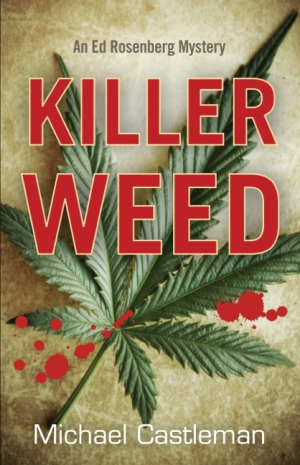Killer Weed
Crisp and visual imagery, brisk and humorous dialogue—this novel’s prose will capture the attention of those interested in San Francisco’s hippie history.
Michael Castleman’s Killer Weed is a nostalgic remembrance of the Haight-Ashbury neighborhood of San Francisco in the decade after the assassination of President Kennedy. Husband and wife newspaper team, Ed and Julie Rosenberg are cobbling together an economic life in the aftermath of the newspaper decline in the twenty-first century. Ed stumbles on a retrospective exhibit financed by a billionaire determined to find his true identity, while Julie is planning a long career as a press correspondent with the favored candidate in the mayoral race—until he is murdered.
The pace of the book wavers between the traditional page-turning quest for the killer and an essay exalting the lost nirvana of the city. As Ed delves into the mystery of the murder he encounters characters from San Francisco past. Each character provides a small clue to keep Ed focused on solving the murder and learning the identity of his well-healed benefactor.
Most of the reformed characters Ed meets are unusually loquacious but they appear, recite their fond remembrances, offer a clue, and flame out. The billionaire’s childhood among the hippies of the 60s is enticing, but after Ed’s initial meeting with the recluse, he returns to his hermitage. Paul Nightingale, an ex-dealer turned handyman, provides a lengthy description of the business plan of smugglers. Carol Covington, a retired black revolutionary, now leads a Baptist choir.
The third-person narrator is Ed’s alter ego, and the narrator is tied to Ed like a Siamese twin. Ed’s presence in every chapter prevents the narrator from being more omniscient and restricts the development of many characters who have potential. Nevertheless, the prose and dialogue are brisk, often humorous, and move forward this plot-driven novel effectively. While Castleman uses many clichés, he sometimes turns them inside out for an effective, though brief, glimpse of Ed’s sardonic personality. Speaking of Ed’s wealthy protégé, the narrator notes that “When a billionaire decides to leave no stone unturned, he can trigger landslides.” Castleman’s images are also crisp and visual, and he notes that the “fog spilled over the ridge like foam down the side of a beer glass.”
In Killer Weed, Castleman is more interested in the history of a city’s past then in the characters from that past, more involved with past times of those people than the people of those past times. It is a novel advocating causes rather than creating characters who believe in causes. If a reader is a devotee of San Francisco’s hippie history this novel may be enjoyable, especially if one reads it with a flower in their hair.
Reviewed by
Thomas H. Brennan
Disclosure: This article is not an endorsement, but a review. The publisher of this book provided free copies of the book to have their book reviewed by a professional reviewer. No fee was paid by the publisher for this review. Foreword Reviews only recommends books that we love. Foreword Magazine, Inc. is disclosing this in accordance with the Federal Trade Commission’s 16 CFR, Part 255.

